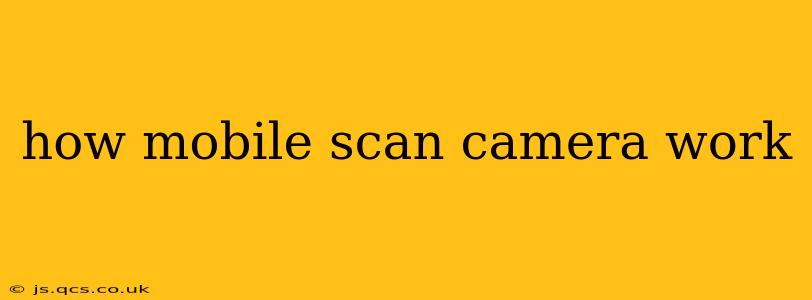How Mobile Scan Cameras Work: From Snapshots to Digital Documents
Mobile phones have revolutionized the way we handle documents. No longer are we chained to bulky scanners; our smartphones have become powerful, portable document scanners. But how does this seemingly simple process actually work? The magic behind mobile scan cameras lies in a combination of hardware and sophisticated software. Let's delve into the details.
What components enable mobile scanning?
The core components responsible for mobile scanning functionality are:
-
The Camera: This is the primary sensor, capturing the image of the document. High-resolution cameras with good light sensitivity are crucial for sharp, clear scans, especially in low-light conditions. Modern smartphones often employ advanced image processing techniques to enhance image quality.
-
Image Processing Software: This is where the real magic happens. The software analyzes the captured image, identifying the document's edges and correcting for perspective distortion. It performs tasks like:
- Perspective Correction: Straightening skewed images to ensure the final scan is rectangular and free of warping.
- Noise Reduction: Minimizing graininess and artifacts in the image to improve clarity.
- Color Correction: Adjusting color balance to ensure accurate representation of the original document.
- Edge Detection: Precisely identifying the boundaries of the document to crop out unnecessary background.
- Automatic Brightness and Contrast Adjustment: Optimizing image quality to enhance readability.
-
Optical Image Stabilization (OIS): Many high-end smartphones incorporate OIS to minimize blurring from hand tremors, ensuring sharper scans even when the phone isn't perfectly still.
How does the software process the image?
The software uses several algorithms to process the captured image. Here are some key elements:
-
Edge Detection Algorithms: These algorithms identify the boundaries of the document within the image. Sophisticated algorithms can distinguish between the document and the surrounding background, even if the background is complex.
-
Perspective Transformation: After edge detection, the software applies a geometric transformation to correct perspective distortion. This ensures a perfectly rectangular scan, regardless of the angle at which the photo was taken.
-
Image Enhancement Algorithms: These algorithms refine the image quality, reducing noise, enhancing contrast, and correcting color balance. This improves readability and makes the final scan look more professional.
What are some common scanning apps and their features?
Numerous apps are available on both Android and iOS platforms, each offering varying degrees of functionality. Many utilize similar core technologies but differ in their user interfaces and advanced features:
- Adobe Scan: Known for its robust OCR (Optical Character Recognition) capabilities, allowing conversion of scanned images into editable text.
- Microsoft Office Lens: Integrates seamlessly with the Microsoft ecosystem, offering easy sharing and editing within Office applications.
- Google Drive Scan: A simple yet effective scanner integrated directly into Google Drive for convenient storage and organization.
- Scanner Pro: Offers advanced features like batch scanning, automatic document detection, and password protection for scanned documents.
What are the limitations of mobile scanning?
While incredibly convenient, mobile scanning does have limitations:
- Image Quality: The quality of the scan depends heavily on the quality of the smartphone's camera and lighting conditions. Poor lighting or a low-resolution camera can result in blurry or poorly defined scans.
- Document Size: Very large documents might require multiple scans and careful stitching together of the images.
- Scanning 3D Objects: While some apps offer features to handle some 3D objects, it's not as accurate as dedicated 3D scanners.
Can I scan multiple pages at once?
While not all apps support it, some allow batch scanning or the ability to scan multiple pages sequentially. This feature speeds up the process, particularly when dealing with multi-page documents.
How accurate is OCR in mobile scanning?
Optical Character Recognition (OCR) accuracy varies depending on the quality of the scan, the type of font, and the OCR engine used by the app. While generally accurate for standard fonts and clear scans, it may struggle with handwritten text or unusual fonts.
By understanding the interplay of hardware and software, you can appreciate the sophisticated technology behind the seemingly simple act of scanning a document with your mobile phone. The advancements in mobile cameras and image processing have truly made document scanning more accessible and efficient than ever before.
